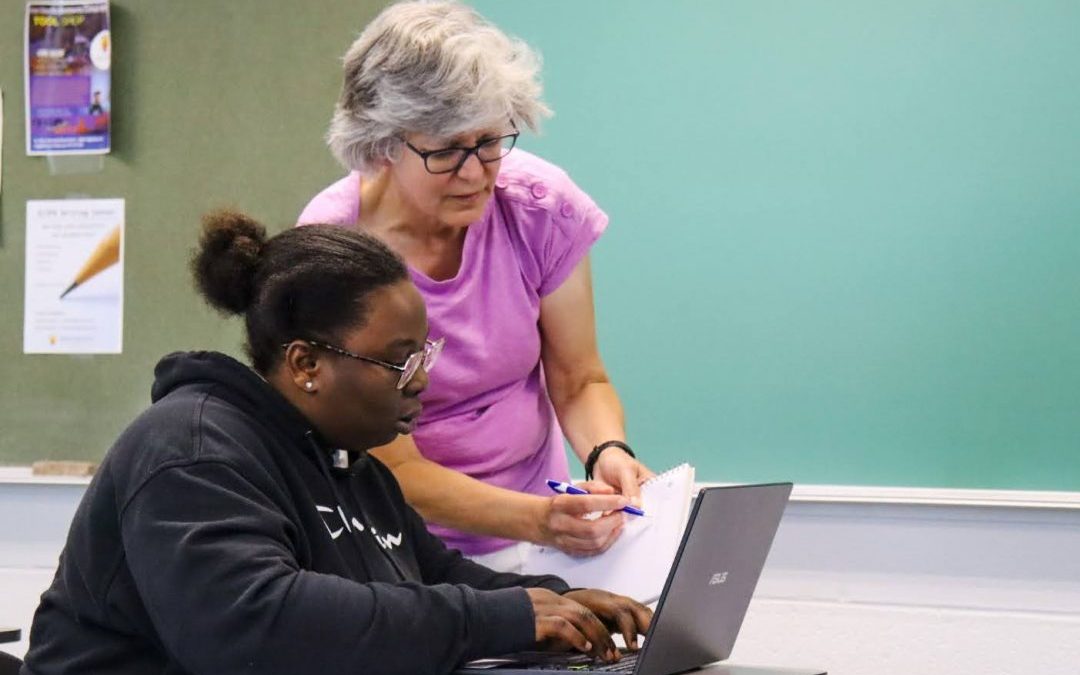Chris Gray, Ph.D. l Founding President, Erie County Community College of Pennsylvania
I recently got into what I’ll charitably refer to as a heated discussion with a well-meaning friend about the way that students – and by extension, institutions of higher education – have changed over the last decade or so. My friend is a longtime educator and genuinely loves his job; however, he has been doing this for a long time, and as we are all want to do, he sometimes waxes nostalgic for students of yore.
Education certainly has changed, and those of us who have been around for decades have earned our stripes. I can give a lot of grace to seasoned educators who began teaching in a room with a chalkboard and have evolved to teach in smart classrooms, Zoom rooms, and asynchronous online spaces. Without a doubt, this is not the arena that I entered in the mid-1990s. That said, it’s easy to throw up our hands, jeer, and point to how challenging today’s students are. Beloit College for years published its annual mindset list in an effort to contextualize the worldview and life experience of incoming college freshmen, a list now housed over at Marist and currently highlighting the class of 2025. Is it a bit reductive? Sure. Is it an accurate representation of today’s college freshmen? Doubtful. But it’s fun, and it allows college teachers to recalibrate as their students literally get younger every year.
It’s easy to sit back and mournfully lament what looks to herald the fall of modern civilization when confronted with students who spend most of their time with their eyes glued to their phone, texting and communicating in Instagram and TikTok reels. When they make their way to our classrooms, we find that many of our students, despite being celebrated as digital natives, have no idea how to download and save a file (yep, there’s always been a cloud for them). We find that they have lost a year or sometimes two years of in-person interaction as a result of the still-not-gone pandemic. We yearn for a simpler time – a mythical space in which students were better prepared for and more engaged in the learning they do in our classrooms. We put on our rosy hindsight goggles and reminisce about the times of yore.
Those days are long gone. Those students are long gone. We know that, deep down, but still we can’t forget a time that felt easier – for us and for them. After that plaintive reverie, we snap out of it and get back to work. And we try to offer support to help these students succeed because, as I’ve said so many times before, it’s our mission. We make sure that students with documented disabilities have access to their needed accommodations. We make sure that we have academic tutoring support available for those who need extra help. We help foster spaces for students to interact and create a sense of community in our space – no, their space. And our faculty take the time to work with our students individually to help them learn the material. All of this is the right thing to do. It’s what we’ve promised.
Back to my story about my friend: he was decrying what he perceived to be the reduction in academic rigor that, to his mind, necessarily accompanies this increased level of support. In his view, if we are doing more to help our students be successful than ever before, then our students must be doing less. The Latin term for this logical fallacy is non sequitur, which translates as “it does not follow.” And follow, it does not. Why, I asked my friend, does it have to be a situation of mutual exclusivity? Why can’t we uphold rigor – college isn’t supposed to be easy, after all – but also and at the same time help our students to learn the tools and skills they will need to undertake this challenging work? That’s what education IS, I argue, and I’m willing to go to the mattresses on this with anyone who disagrees.
Yes, we have implemented more support structures for our students than ever before, but the real question is this: why did it take higher education so long to recognize that college students need support structures, too? Why was college coursework viewed as a sink-or-swim proposition rather than one that could be accessible to anyone if the playing field were only leveled a bit? Why haven’t we been doing this all along?
It’s not that we are doing too much to help our students succeed now; it’s that, in the past, higher education has done too little. As with most things, it’s a balance. It’s our job – and our duty – to continue to help our students to get to where they want to go. And seriously, shouldn’t we have been doing this all along?

